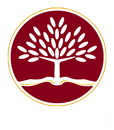What best characterizes the mathematics curriculum at Alsion is that each student is enrolled in the course that best fits his or her needs, no matter the individual’s grade level.
Pre-Algebra/ Transitions
 This course emphasizes problem solving, everyday applications, and the use of technology and reading, while developing and maintaining basic skills. Standard arithmetic and algebraic skills are connected to corresponding geometry topics. Transitions Mathematics integrates applied arithmetic, algebra, and geometry, connecting all of these areas to measurement, probability, and statistics. Variables are used to generalize patterns, as abbreviations in formulas, as unknowns in problems, and are represented on the number line and graphed in the coordinate plane. This course provides opportunities for students to visualize and demonstrate concepts with a focus on real-world application. This course assumes a strong K-6 mathematics background; however, there is some time dedicated to brief reviews of tricky concepts. Students who place at the 7th-grade level or above on a recently standardized test (grade levels are national norms and these norms are higher now than 20 years ago) are appropriate to begin work in this course. Successful completion of this course prepares students for any first-year algebra course.
This course emphasizes problem solving, everyday applications, and the use of technology and reading, while developing and maintaining basic skills. Standard arithmetic and algebraic skills are connected to corresponding geometry topics. Transitions Mathematics integrates applied arithmetic, algebra, and geometry, connecting all of these areas to measurement, probability, and statistics. Variables are used to generalize patterns, as abbreviations in formulas, as unknowns in problems, and are represented on the number line and graphed in the coordinate plane. This course provides opportunities for students to visualize and demonstrate concepts with a focus on real-world application. This course assumes a strong K-6 mathematics background; however, there is some time dedicated to brief reviews of tricky concepts. Students who place at the 7th-grade level or above on a recently standardized test (grade levels are national norms and these norms are higher now than 20 years ago) are appropriate to begin work in this course. Successful completion of this course prepares students for any first-year algebra course.
Algebra I
Like Pre-Algebra, Algebra emphasizes problem solving, everyday applications, and the use of technology and reading, while developing and maintaining basic skills. Algebra I has a scope far wider than most other algebra texts. Probability provides a context for algebraic fractions and functions. Expressions, equations, and functions are described graphically, symbolically, and in tables. Concepts and skills are taught with a variety of approaches. Graphing calculators are implemented to explore solutions to problems, while computer algebra systems (CAS) technology is used in the classroom to develop patterns and practice skills. Algebra I prepares students for any standard geometry course.
Geometry
As in Pre-Algebra and Algebra I, Geometry emphasizes problem solving, everyday applications, and the use of technology and reading, while developing and maintaining basic skills. Geometry integrates physical and coordinate transformations, and gives strong attention to measurement formulas and three-dimensional formulas. Work with proof writing follows a carefully sequenced development of the logical and conceptual precursors to proof. Geometry assumes that students have a graphing calculator and access to a dynamic geometry system such as the Geometer’s Sketchpad or GeoGebra. Students who have studied UCSMP Geometry are ready for any second-year algebra course.
Algebra II/Advanced Algebra/Trigonometry
Algebra II emphasizes problem solving, everyday applications, and the use of technology and reading, while developing and maintaining basic skills. Advanced Algebra emphasizes facility with algebraic expressions and forms, especially linear and quadratic forms, powers and roots, and functions based on these concepts. Students study logarithmic, trigonometric, polynomial, and other special functions both for their abstract properties and as tools for modeling real-world situations. A geometry course or its equal is a prerequisite, as geometric ideas are utilized throughout. Technology for graphing and CAS technology is assumed to be available to students. Advanced Algebra can be used following any standard geometry course. Students who have studied Advanced Algebra are prepared for courses commonly found at the senior level, including trigonometry and pre-Calculus courses.
